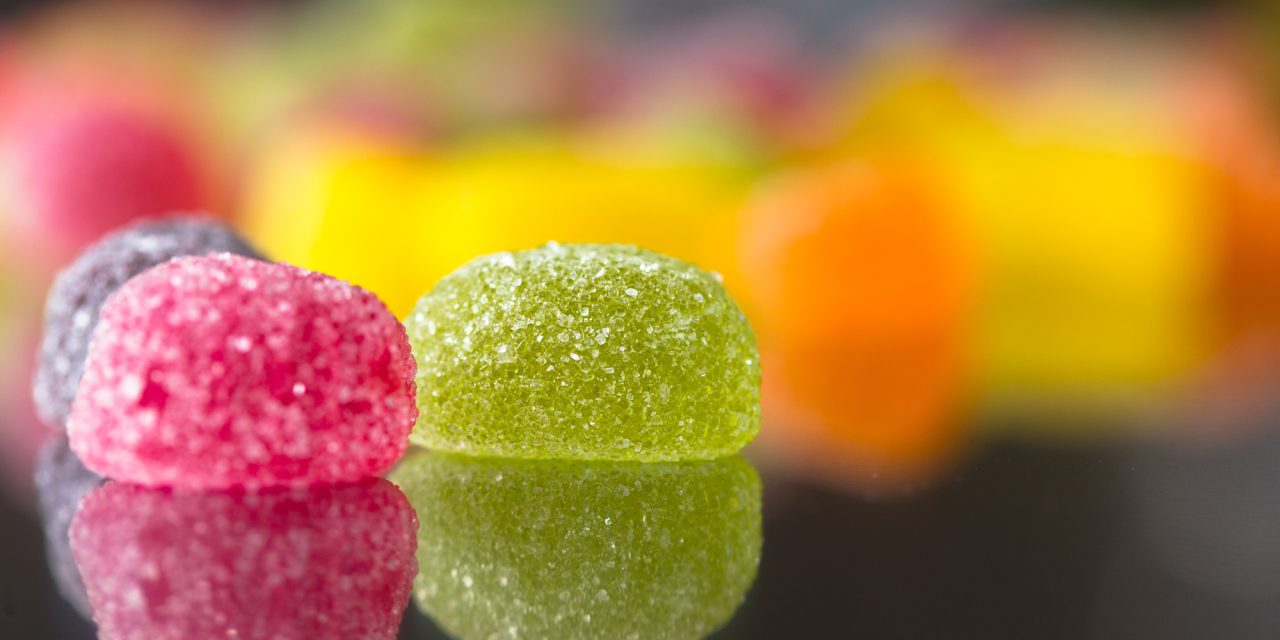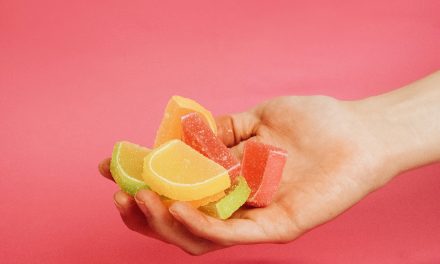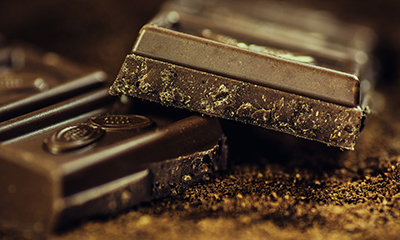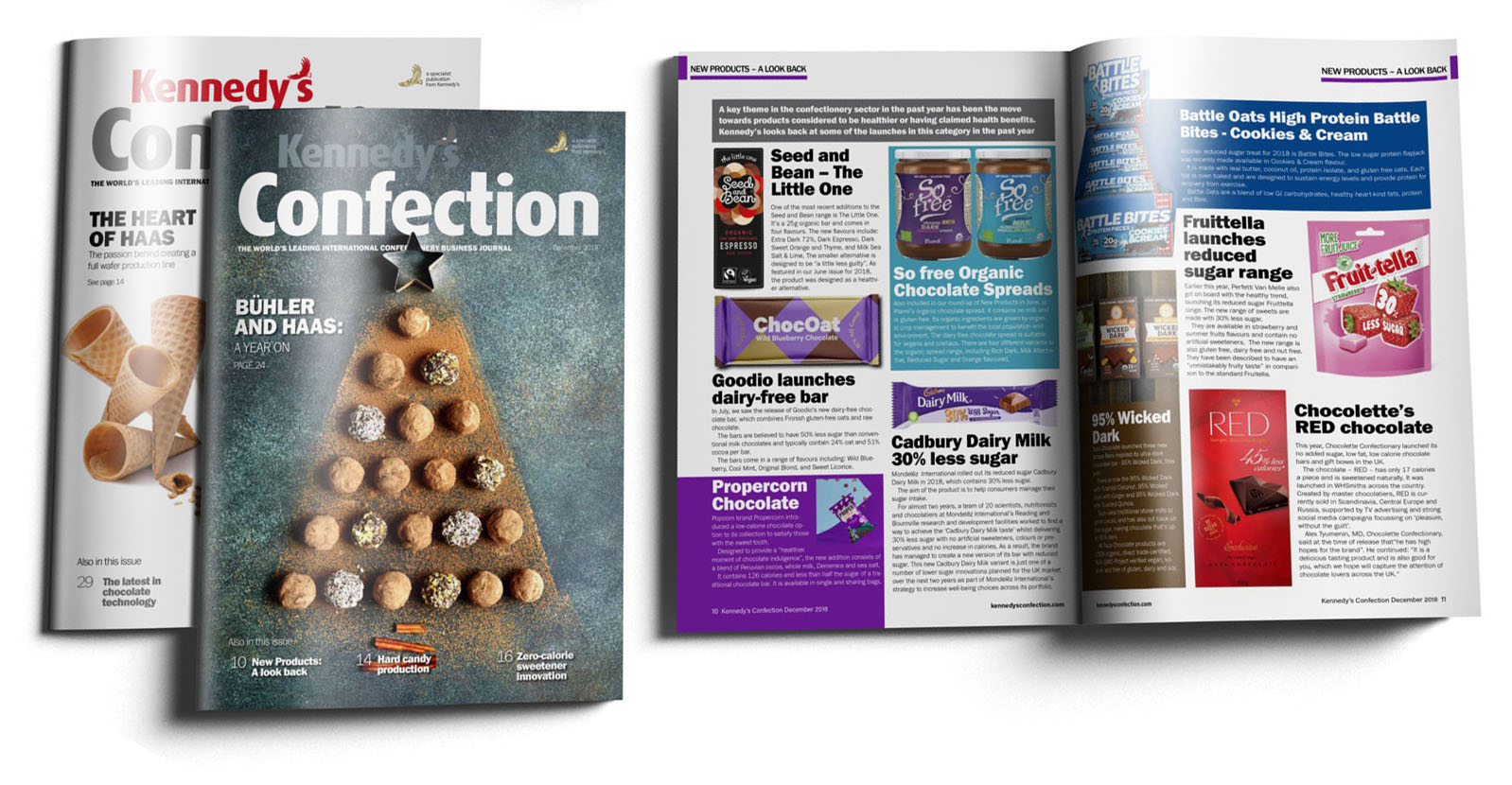Suzanne Callander looks at the solutions that are available today to create jelly and gum products.
The market for confectionery is probably in a greater state of flux today than it has ever been, with global regulations and consumers demanding healthier products which require the use of new ingredients and the creation of new recipes. The jellies and gummies sector, in particular, is undergoing new developments in production technology which are offering alternatives to the classic mogul technology. Innovation in this sector is on the rise – with jellies being developed from fruit pulp or juices, and organic, gluten and gelatin-free offerings also being brought to market.
The over-the-counter (OTC) sector for non-prescription confectionery containing active ingredients and dietary supplements is seeing particular growth and these projects are seeing the benefits that starchless moulding solutions can offer.
A starch-free moulding solution replaces the traditionally used starch trays with solid moulds of a predefined shape. Various solutions are available, including silicone trays, metal trays or polycarbonate moulds. The heated jelly mass can be directly deposited into these moulds. To ensure a smooth demoulding process, the moulds are often sprayed with an anti-sticking or release agent.
New developments continue to move the jellies and gummies sector forwards. A switch to the use of starchless, polycarbonate moulds, for example, has enabled Winkler & Dünnebier (WDS) to develop a completely new, modern, clean and efficient plant technology for fruit gum production, which has its roots in chocolate moulding.
Traditionally, moulded fruit jellies have been two-dimensional – they have a flat and non-demoulded reverse side. However, three-dimensional products can now be created using double moulding technology, allowing products to be created with more realistic forms that make them stand out from the competition. To achieve this, the products are moulded using a starchless process in two half polycarbonate moulds, which are then folded together. This process allows a wide variety of masses to be moulded three-dimensionally. Fillings and solid ingredients can also be added.
WDS also pointed out that, when it comes to jelly and gummy production, mogul technology is still very important because of the flexibility that starch moulding offers, allowing new shapes to be created quickly and cost-effectively. In addition, many jelly and gummy products will require post-drying in the mould starch to create the desired finished texture, including products that crystallise through moisture extraction in the mould starch.
As a result, WDS believes that starch-free moulding technology does not currently offer a competitive solution for standard consumer jelly and gummy production. Instead, this relatively new technology is mostly being employed in applications where cleanliness and avoidance of cross-contamination are key – so it is primarily being implemented in the production of OTC products and jellies and gummies containing food supplements and vitamins, for example.
In praise of the mogul
A mogul line is the traditional method used in the production of gummies and jellies, offering a high-speed, automated manufacturing solution that allows for large-scale production – often producing thousands of products per hour. Basically, a mogul is a starch moulding solution which comes into play once the ingredients have been mixed and cooked. Typically, a mogul will be a four-part loop system with an integrated feeder, starch buck, depositor and stacker where cured products are
demoulded, trays are filled with starch, which then receive impressions of the candy shapes to be made. Depositing heads fill the impressions with the gummy mixture. The depositing components and accessories are usually interchangeable, so manufacturers can create a variety of products
ranging from single colour to side-by-side colour articles of various ratios, centre-filled and striped
gummies. The trays are then stacked and transferred to curing rooms for the product to ‘set’ or turn from liquid into a soft candy. Once the product is cured, the trays are returned to the mogul plant, where the confections are de-moulded, separated from starch and cleaned. The ingredients, the cooking and the curing parts of the process are largely responsible for achieving the desired texture of the product, whereas the starch moulding equipment is largely responsible for the shape, appearance and surface finish of the gummies and jellies.
Edward Smagarinsky, Group Product Manager – Mogul at TNA, is a keen proponent of the
starch moulding mogul process, saying that when it comes to the creation of jellies and gummies, as well as other confectionery products such as liquorice, fondant creams, marshmallow foams the mogul can offer the most flexible processing solution, as it enables confectioners to create a wide range of products in a cost-effective way.
Edward offers some advice to help producers boost the versatility of their mogul lines, without compromising productivity:
Focus on the depositing process: The mogul enables producers to create single colour, side-by-side colour, centre-filled or striped gummies, and it is the depositing process that makes these various products and colours possible, so confectioners should select depositing pumps with a range of configurations and piston diameters as this will ensure they can facilitate different recipe types – from lightly aerated to heavy syrup-based options.
Remove the steam bath from the process: The finishing stage of confectionery processing is sugar coating, which has historically involved a steam bath followed by a curtain of sugar in a tumble drum. However, innovative tacking agents are now available and, when applied by specialised coating equipment at very specific rates, these allow gummies to be coated without steaming. This is said to lead to shorter retention times and higher product quality, as well as providing more options in terms of flavour application. Dry ingredients, or even flavoured tacking agents, can be added at a specific rate to cater for different consumer and regional preferences.
Scale output to match market demands: Flexibility to scale production to meet changing market trends is a fundamental requirement. Mogul starch moulding equipment has, over the years, been developed to enable producers to reach higher throughput levels. Today’s equipment designs deliver a combination of productivity and versatility through the integration of the feeder, starch buck, depositor, stacker and pallet transport. Product, as a result, moves seamlessly through the mogul line at exactly the desired speed.
Stay hygienic to optimise food safety and quality: In a mogul line, a flexible system design that allows easy access for cleaning and maintenance is key, which is why most gummy processing equipment is constructed from food grade stainless steel. This material facilitates easier cleaning, and offers a smooth, defect-free surface to prevent product residue build-up. Equipment cleaning should be carried out at least once a day, at the end of a shift, when operators are processing the same product, or more often where changeovers are occurring.
Move towards digitalisation: Innovations in software are now making it possible to create immersive processing and packaging environments – interactive digital models that replicate a customer’s physical equipment. Creating a digital twin of a mogul line – that can be interacted with via virtual reality or augmented reality technology – allows any potential problems with the line to be designed out before it is physical implemented. This will help to reduce the risk of process disruption when a new line is added and can also help facility operator training. It can also help ensure the production line is as energy efficient as possible and can help improve overall line efficiency.
Keep it clean
As a supplier of conveying and solidification solutions for jelly and gummy products, IPCO offers a range of hygienic stainless-steel conveyors and cooling lines in addition to its Rotoform pastillation system.
Marko Leber, Global Product Manager – Food at IPCO, explains the important role that conveyors can play in jelly and gummy production. “The qualities of a steel belt – flat and smooth with good heat transfer properties – make it well-suited for use in the production of gummy candy products and the forming of fruit-flavoured jellies into pastilles. The use of a stainless-steel material ensures easy cleaning of the conveyor belt which enables high standards of hygiene to be maintained.”
Staying on the subject of hygiene, Marko went on to discuss IPCO’s processing systems, including the Rotoform 4G FD which, because it is designed for use in food production applications has to comply with the highest standards of cleanliness and hygiene. “All parts that come into contact with the product are made of stainless-steel or other materials appropriate to food industry to ensure GMP/FDA compliance,” he says.
Among confectionery products commonly solidified on the Rotoform system are chewing gum base, chocolate, fats, emulsifiers, and additives. These products are typically formed into pastilles for subsequent handling and reprocessing. Another confectionery application is the forming of fruit-flavoured jellies into pastilles.
“The process combines a drop depositor with a steel belt cooler to produce pastilles of highly uniform shape, stability and quality. Molten product is deposited onto a continuously running steel belt in the form of measured droplets. The heat of the melt is transferred to cooling air blown onto the product and to the belt itself. The thermal conductivity of the belt delivers fast, controlled solidification so that pastilles can be discharged cleanly at the end of the system.”
While it would appear that there is no one size fits all solution when it comes to producing jellies and gummies – with starch-free technologies lending themselves more naturally to use with products that contain active ingredients – the one thing that remains paramount, with all solutions, is hygiene. There is always a need to ensure that product does not build up on the equipment, so when looking at any solution always consider how easy it might be to clean the equipment and always take a close look at the materials that the equipment is made from.
CBD gummies sector sees growth
Cannabidiol (CBD) is an active ingredient in cannabis derived from the hemp plant. It does not contain the psychoactive ingredient found in marijuana that produces a high.
A recent report from The Insight Partners, forecasts the growth of the CBD gummies sector to be 28.3% of CAGR during 2021 to 2028. Companies are introducing new flavours, formulations, and delivery methods to stand out in the market. CBD gummies are being launched with specific formulations for different health conditions, such as anxiety or sleep. Additionally, CBD gummies with different potencies and dosages are being created to cater to the different needs of consumers.
The CBD gummies market is divided into regions such as North America, Europe, Asia Pacific, and the Rest of the World. North America is envisioned to dominate the global market due to the increasing legalisation of cannabis and CBD in the US and Canada. Europe is also expected to see considerable growth in the CBD gummies market due to the increasing legalisation of cannabis and CBD in various countries.
Editorial contact:
Editor: Kiran Grewal kgrewal@kennedys.co.uk







